We take a trip around the archetypal rich kid house from anime, music videos and movies
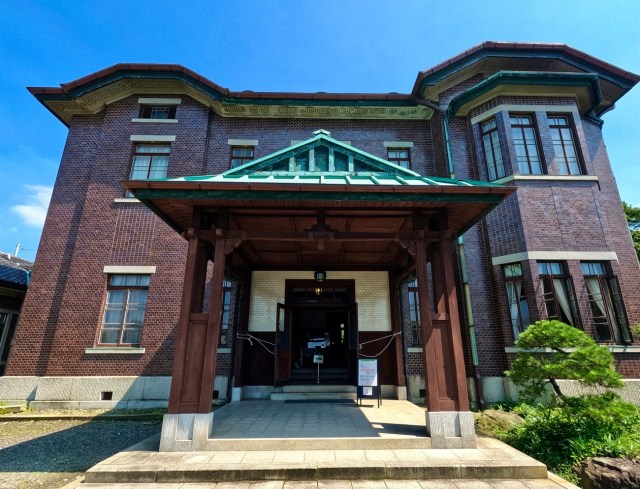
It’s time to congregate around the entrance gate and gasp in awe at how big and cool this house is.
Kimi ga mienakute, mienakute, nandomo koe kakeru yo! So goes the refrain of the 1996 L’Arc~en~Ciel hit “Lies and Truth”. Translated, it means “I cannot see you, I cannot see you, I cry out endlessly”. Judging from the promotional music video for the song, it’s because he’s searching for the person in question in an absolutely gigantic Western-style manor.
▼ Maybe you are around this winding hallway? Or somewhere in this cavernous hall?
L'Arc〜en〜Ciel / Lies and Truth (1996.11) pic.twitter.com/45wYkJkijg
— 90's音楽bot II (@90smusicbot2) July 3, 2021
The house in the video is the Former Ishikawa-gumi-Seishi Western Style Building, a manor that was built in 1921. This year is the house’s 100th birthday! It’s open to the public on the second and fourth Saturdays of each month from March until November, and we decided to take a trip out there ourselves to take a look.
You see, music videos aren’t the only media that make use of this infamous Taisho-era building. It’s a popular reference building for manga, especially rich or ostentatious houses; Daiki Aomine’s house in Kuroko’s Basketball is purported to have used the Ishikawa-gumi-Seishi building as an inspiration, and you can catch glimpses of its influence in plenty of other anime and manga. It was also used as a location to film the J-drama Trick 2 in 2002.
The city guide for Iruma City, where the mansion stands, alleges that it’s about a seven-minute walk from the Iruma City Station (Seibu-Ikebukuro Line) to the building. On days when the house is open to the public, however, you can enter from the back gate which makes it more of a five-minute walk.
▼ These imperious gates cut a striking impression.
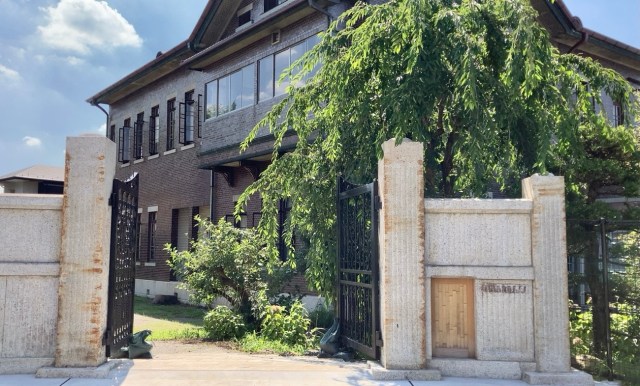
This building was one of the fore-running silk-spinning establishments in Japan, built expressly to invite and accommodate American traders. An imposing, Western-style manor, it doubtlessly caught the eye of many people passing by along the main road.
Pay the 200 yen (US$1.83) entrance fee and you can head inside to enjoy the manor’s interior—unless you’re a junior high school student or younger, in which case entrance is free. In accordance with Covid-19 precautions, you have to sign a form assuring that you aren’t feeling unwell and that you haven’t been in close proximity to anyone who’s likely to have caught the virus. There’s also an option to listen to a pre-recorded guide as you travel the manor, but you need to reserve this in advance.
We stepped into the first room in our journey, the drawing-room, or parlor. The ceiling in this room is an especially formal design called oriage kogumi goutenjou, involving fine lattice-work and coffered square panels.
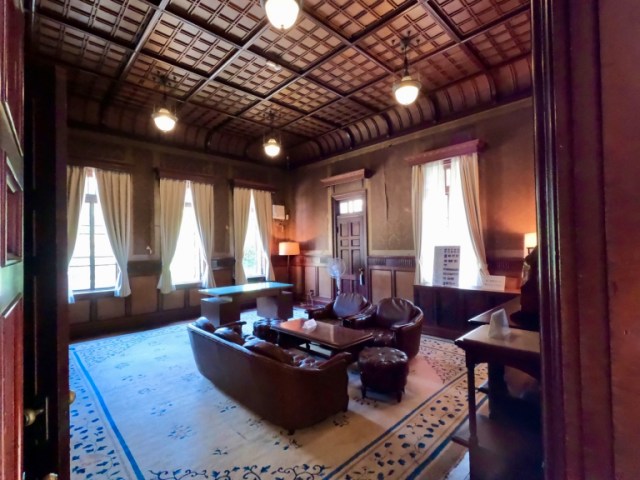
On to the guest room! The stained-glass ceiling lamp and full windows adorned with curtains definitely give this room a distinctive Western flair.
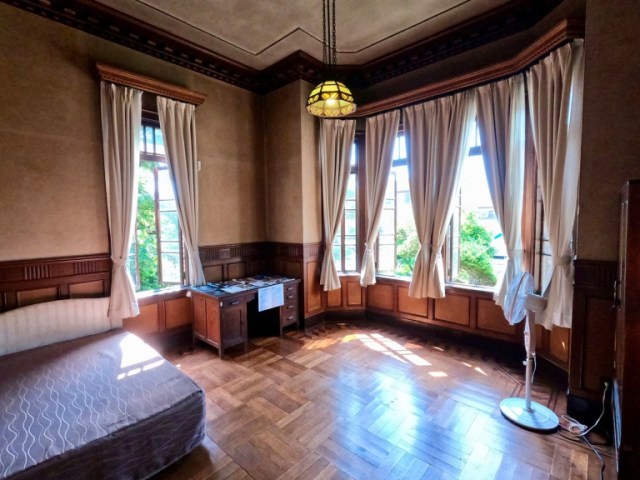
For a deeper taste of that 13th-century glamor, we tried the dining room next. Even more fancy ceiling work was to be found in this room, with geometric patterns looming over the room’s main feature: a long dining table.
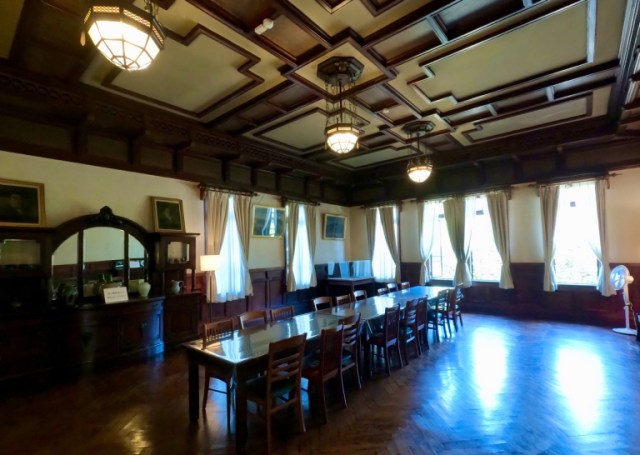
Our next stop was the infamous stairwell. The stairs feature quite prominently in the aforementioned L’Arc~en~Ciel video, but they’re a popular fixture in many other videos as well due to their striking geometry and classic vibe.
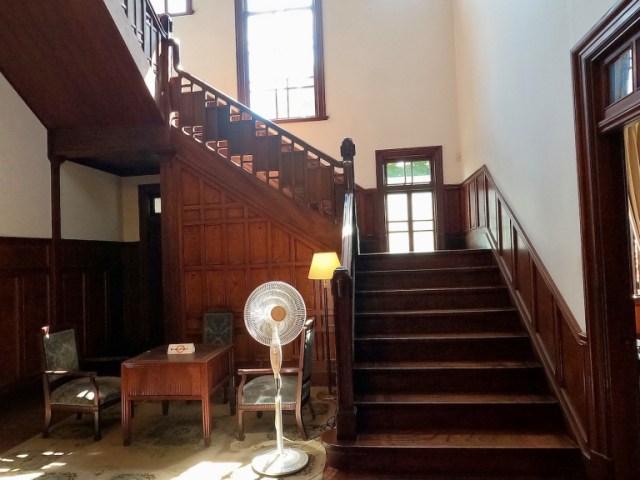
▼ The staircase also features in Gackt’s “Kimi no Tame ni Dekiru Koto” video.
We headed up those famous stairs to the second floor, where we were treated to even more gorgeous natural light as well as the sight of the original chandelier from when the building was initially furnished.
▼ This space is adorned with a full cow-pelt rug.
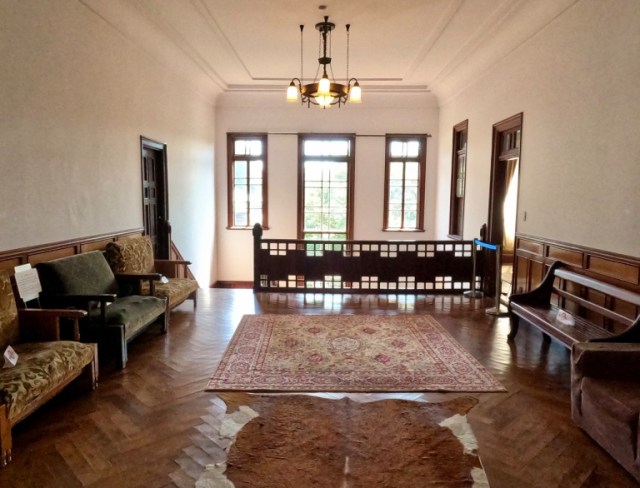
This floor contains a reception hall complete with a glamorous red carpet. Naturally, this was a popular venue for many balls and dances.
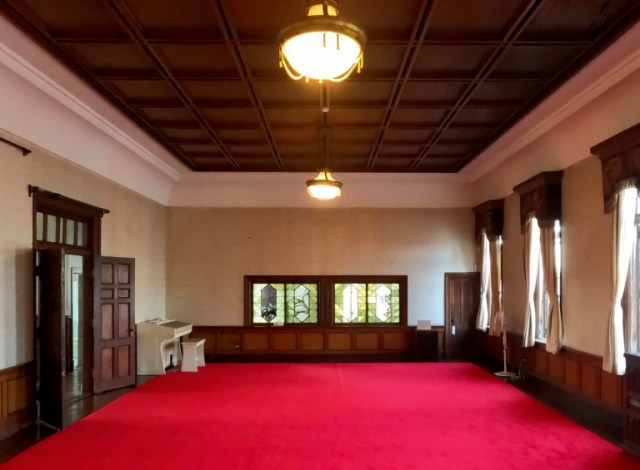
And when we walked a little closer, we were able to glimpse a real treat: a restored piece of Shikunshi (Four Gentlemen) stained glass. “Four Gentlemen” refers to four kinds of plants: plum blossom, orchid, bamboo, and chrysanthemum. Only three places in all of Japan are said to feature this gorgeous, historical stained glass.

The manor also has some Japanese-styled rooms…well, of a sort. There are two rooms fitted with tatami mats, but they were clearly intended to receive guests from other countries with Japanese hospitality.
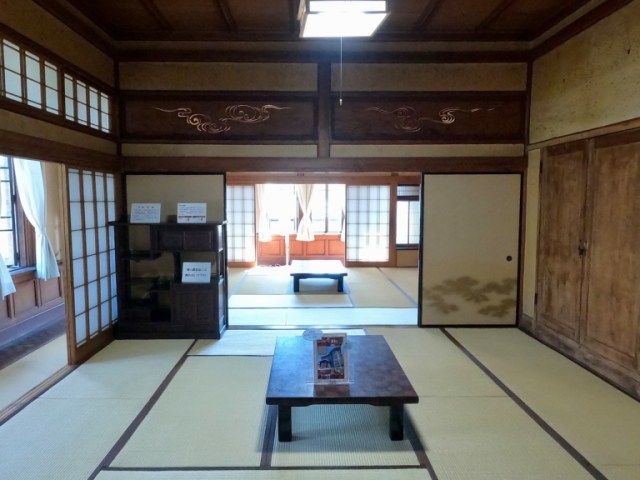
Unfortunately, we weren’t permitted to enter what’s rumored to be the most luxurious area of the house—a room for venerated guests. The room is off-limits due to damage, so we were only afforded the tiniest peep inside.
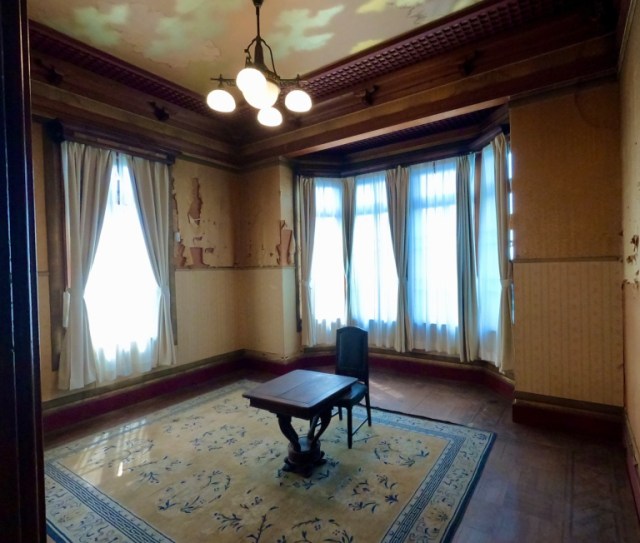
The building is gorgeous, and you might even recognize certain aspects of the building from various Japanese media. Make sure to check for days when it’s open to the public so you can enjoy this historic manor’s charms to the fullest! And keep your eyes out for similarly cool Western-style buildings that offer their own tours.
Building information
Ishikawa-gumi-Seishi Western Style Building / 旧石川組製糸西洋館
Address: Saitama-ken, Iruma-shi, Kawaramachi, 13-13
埼玉県入間市河原町13-13
Open from 10 a.m. to 4 p.m. on deisgnated days
Website
Images © SoraNews24
● Want to hear about SoraNews24’s latest articles as soon as they’re published? Follow us on Facebook and Twitter!
Credit:




0 comments: